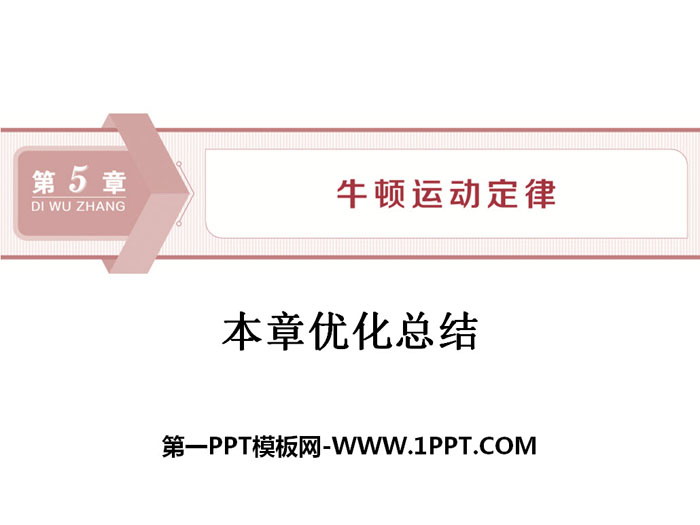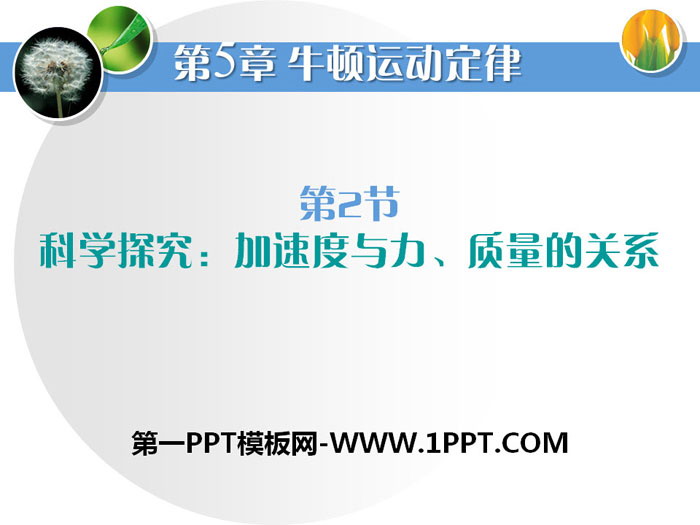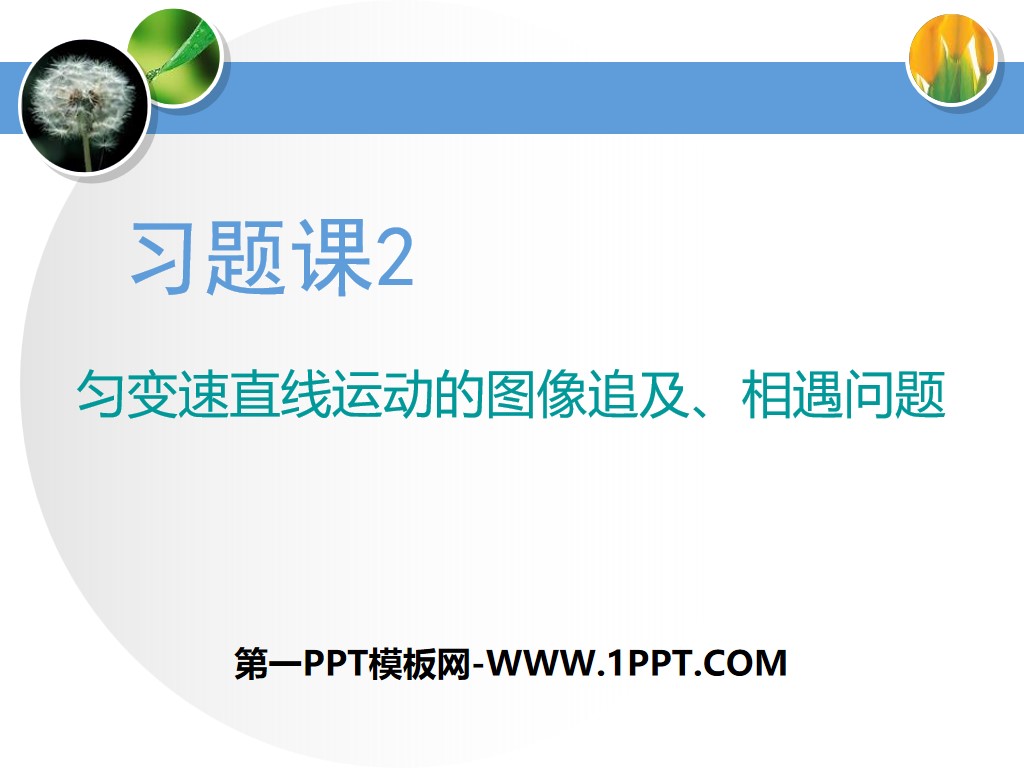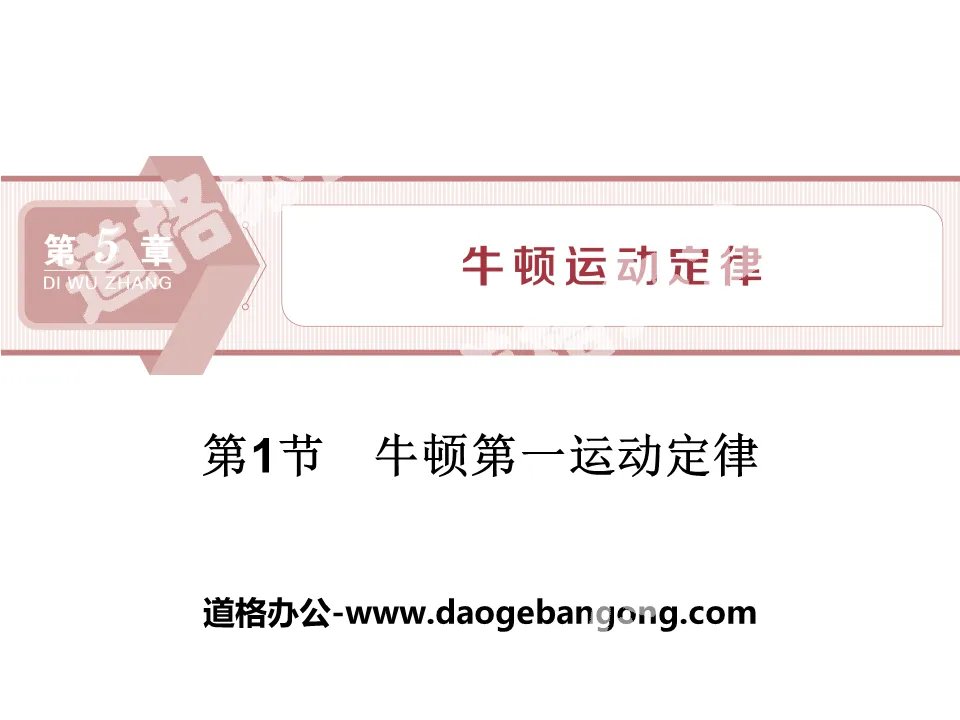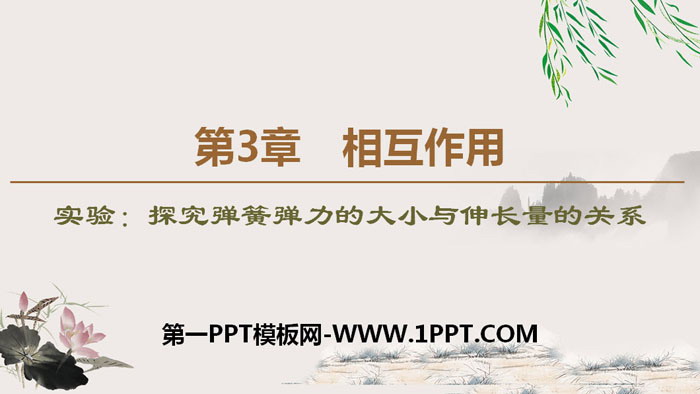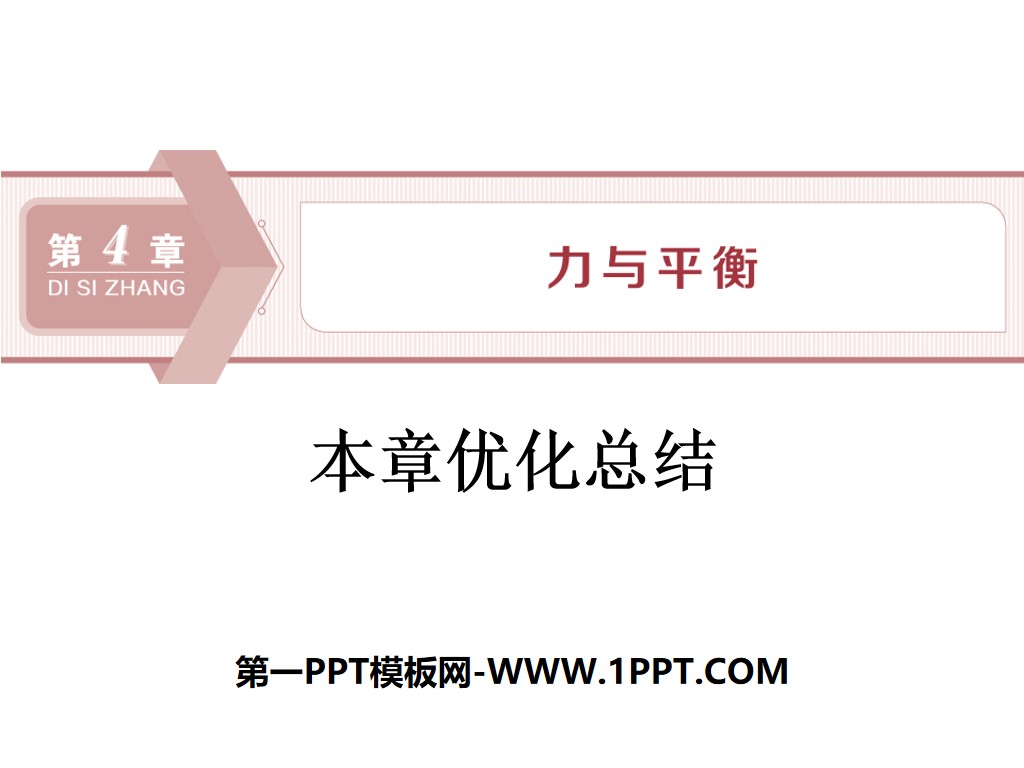
| Category | Format | Size |
|---|---|---|
| Lu Ke Edition High School Physics Compulsory Course One | pptx | 6 MB |
Description
"Optimization Summary of this Chapter" Force and Balance PPT
Integration and improvement
Common equilibrium models of objects
1. "Light rope" model: The light rope can only stretch and deform, so it can only produce pulling force. The direction is always pointing in the direction of rope contraction, and the internal tension of the rope is equal everywhere.
2. "Pulley" model: The pulley model usually refers to the combination of a pulley and a light rope. The friction between the pulley and the light rope is ignored. At this time, the pulling force of the rope on both sides of the pulley is equal.
3. "Node" model: "Nodes" are often connected to heavy objects. The forces acting on the nodes are not necessarily equal, but the resultant force of all forces must be zero.
4. "Slip ring" model: The slip ring can exert tensile force and also bear pressure. The direction of the force is along the radial direction of the slip ring.
5. "Light spring" model: A light spring can not only undergo tensile deformation, but also compressive deformation, so a light spring can generate both tension and pressure, and the elastic force inside the spring is equal everywhere. The direction of the elastic force is always along the axis of the spring. Within the elastic limit, the magnitude of the elastic force is F=kx.
6. "Light rod" model: The light rod can not only undergo tensile deformation, but also compressive deformation, so the light rod can not only exert tension but also withstand pressure, and the elastic force is equal everywhere in the rod. Light rods can also undergo bending deformation, so the elastic force of the rod is not necessarily along the direction of the rod.
(1) "Dead rod" type
A "dead rod" means that the light rod cannot rotate, and the elastic force it generates is not necessarily along the direction of the rod. Its magnitude and direction must be solved according to equilibrium conditions.
(2) "Living rod" type
A "living rod" is a light rod that can rotate around a smooth axis. The elastic force it generates must be along the direction of the rod (otherwise the rod will rotate). The size of the elastic force is solved according to the equilibrium condition.
Mathematical methods commonly used in solving equilibrium problems
Convert rhombus to right triangle method
If the two components of the force are equal in magnitude, then the parallelogram made with the two components as adjacent sides is a rhombus, and the two diagonals of the rhombus are perpendicular to each other. The rhombus can be divided into four identical right-angled triangles, so the rhombus is transformed into right triangle
Orthogonal decomposition method
The equilibrium condition (F=0) of an object under the action of a common point force is a vector equation. To find the resultant force, you need to apply the parallelogram rule, which is quite troublesome. Usually transformed into Fx=0, Fy=0 using orthogonal decomposition method
similar triangle method
If the force triangle is similar to the geometric triangle during the operation of the force using the parallelogram rule (or the triangle rule), the solution can be solved based on properties such as the proportion of the corresponding sides of similar triangles.
Selection and application of holistic method and isolation method
The overall method and the isolation method are two commonly used methods for force analysis of objects. The comparison of these two methods is as follows:
1. Steps to solve problems using isolation method
In order to study the force and motion of an object in the system (connected body), the isolation method is generally adopted. The basic steps are:
(1) Clarify the research object, process or status;
(2) Isolate a certain research object or a certain movement process from the entire process;
(3) Draw a force analysis diagram or motion diagram of an object in a certain state;
(4) Select appropriate physical laws to solve equations.
2. Steps to solve problems using the holistic approach
The whole and the part are relative. The part becomes the whole in a larger scope, and the whole becomes a part in a smaller scope. The key lies in how to define the scope of the whole and the part when dealing with specific problems.
When it only involves studying the system without involving the forces and motions of certain objects within the system, the overall method can generally be used. Its basic steps are:
Keywords: Free download of PPT courseware of Lu Ke Edition High School Physics Compulsory Course 1, PPT download of optimized summary of this chapter, PPT download of force and balance, .PPT format;
For more information about the PPT courseware "Optimization and Summary of this Chapter, Strength and Balance", please click the Optimization and Summary of this Chapter ppt Force and Balance ppt tag.
"Optimization Summary of this Chapter" Newton's Laws of Motion PPT:
"Optimization Summary of this Chapter" Newton's Laws of Motion PPT integrates and improves the connected body problem of dynamics 1. Connected body: A whole composed of two or more interacting objects with the same acceleration is called a connected body. For example, if several objects are stacked together or squeezed side by side...
"End of Chapter Review Lesson" Force and Balance PPT:
"End of Chapter Review Course" Strength and Balance PPT Part One Content: Consolidation Level Knowledge Integration [Core Quick Filling] 1. Synthesis and decomposition of force (1) Obey the rules: _________ rule or _________ rule. (2) The range of the resultant force of two common point forces: _________F_______..
"Force Analysis and Balance of Common Point Forces" Force and Balance PPT:
"Force Analysis and Balance of Common Point Forces" Force and Balance PPT Part One Content: High-frequency Test Point 1 Force Analysis of Objects [Knowledge Comprehensive] 1. Force analysis: Analyze all the external forces that the research object (specified object) receives in the specified physical environment, and draw the object...
File Info
Update Time: 2024-07-03
This template belongs to Physics courseware Lu Ke Edition High School Physics Compulsory Course One industry PPT template
"Optimization Summary of this Chapter" Force and Balance PPT Simple campus recruitment activity planning plan summary enterprise and institution recruitment publicity lecture PPT template is a general PPT template for business post competition provided by the manuscript PPT, simple campus recruitment activity planning plan summary enterprise and institution recruitment promotion Lecture PPT template, you can edit and modify the text and pictures in the source file by downloading the source file. If you want more exquisite business PPT templates, you can come to grid resource. Doug resource PPT, massive PPT template slide material download, we only make high-quality PPT templates!
Tips: If you open the template and feel that it is not suitable for all your needs, you can search for related content "Optimization Summary of this Chapter" Force and Balance PPT is enough.
How to use the Windows system template
Directly decompress the file and use it with office or wps
How to use the Mac system template
Directly decompress the file and use it Office or wps can be used
Related reading
For more detailed PPT-related tutorials and font tutorials, you can view: Click to see
How to create a high-quality technological sense PPT? 4 ways to share the bottom of the box
Notice
Do not download in WeChat, Zhihu, QQ, built-in browsers, please use mobile browsers to download! If you are a mobile phone user, please download it on your computer!
1. The manuscript PPT is only for study and reference, please delete it 24 hours after downloading.
2. If the resource involves your legitimate rights and interests, delete it immediately.
3. Contact information: service@daogebangong.com
"Optimization Summary of this Chapter" Force and Balance PPT, due to usage restrictions, it is only for personal study and reference use. For commercial use, please go to the relevant official website for authorization.
(Personal non-commercial use refers to the use of this font to complete the display of personal works, including but not limited to the design of personal papers, resumes, etc.)
Preview




